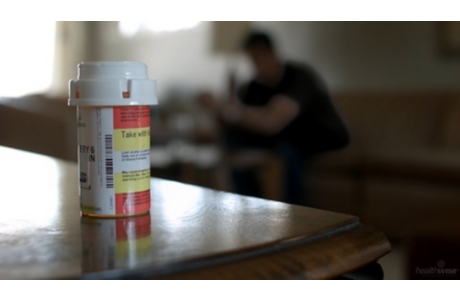Safe Use of Long-Acting Opioids
Topic Overview
Long-acting opioid pain relievers are medicines used to relieve moderate to severe long-term pain. They are also called extended-release opioids. Opioids relieve pain by changing the way your body feels pain. They don’t cure a health problem, but they help you manage the pain.
If you take a lot of short-acting medicine, your doctor may give you long-acting opioids. Long-acting opioids help you avoid the ups and downs in pain relief that you may have with short-acting medicine.
Opioids are strong medicines. They can help you manage pain when you use them the right way. But if you misuse them, they can cause serious harm and even death.
If you decide to take opioids, here are some things to remember.
- Keep your doctor informed. You can develop opioid use disorder. Moderate to severe opioid use disorder is sometimes called addiction. The risk is higher if you have a history of substance use. Your doctor will monitor you closely for signs of opioid use disorder and to figure out when you no longer need to take opioids.
- Make a treatment plan. The goal of your plan is to be able to function and do the things you need to do, even if you still have some pain. You might be able to manage your pain with other non-opioid options like physical therapy, relaxation, or over-the-counter pain medicines.
- Be aware of the side effects. Opioids can cause serious side effects, such as constipation, dry mouth, and nausea. And over time, you may need a higher dose to get pain relief. This is called tolerance. Your body also gets used to opioids. This is called physical dependence. If you suddenly stop taking them, you may have withdrawal symptoms.
Examples of long-acting opioids
- Fentanyl patch (Duragesic)
- Methadone (Dolophine)
- Morphine (Kadian)
- Oxycodone controlled-release (OxyContin)
Safety tips when using long-acting opioids
If you need to take opioids to manage your pain, remember these safety tips.
- Follow directions carefully. It’s easy to misuse opioids if you take a dose other than what’s prescribed by your doctor. This can lead to overdose and even death. Even sharing them with someone they weren’t meant for is misuse.
- Be cautious. Opioids may affect your judgment and decision making. Do not drive or operate machinery until you can think clearly. Talk with your doctor about when it is safe to drive.
- Reduce the risk of drug interactions. Opioids can be dangerous if you take them with alcohol or with certain drugs like sleeping pills and muscle relaxers. Make sure your doctor knows about all the other medicines you take, including over-the-counter medicines. Don’t start any new medicines before you talk to your doctor or pharmacist.
- Safely store and dispose of opioids. Store opioids in a safe and secure place. Make sure that pets, children, friends, and family can’t get to them. When you’re done using opioids, make sure to dispose of them safely and as quickly as possible. The U.S. Food and Drug Administration (FDA) recommends these disposal options.
- The best option is to take your medicine to a drop-off box or take-back program that is authorized by the U.S. Drug Enforcement Administration (DEA).
- If these programs aren’t available in your area and your medicine doesn’t have specific disposal instructions (such as flushing), you can throw them into your household trash if you follow the FDA’s instructions. Visit fda.gov and search for “unused medicine disposal.”
- If you have opioid patches (used or unused), your options are to take them to a DEA-authorized site or flush them down the toilet. Do not throw them in the trash.
- Only flush your medicine down the toilet if you can’t get to a DEA-approved site or your medicine instructions state clearly to flush them.
- Reduce the risk of overdose. Misuse of opioids can be very dangerous. Protect yourself by asking your doctor about a naloxone rescue kit. It can help you—and even save your life—if you take too much of an opioid.
Possible side effects
All medicines have side effects. But many people don’t feel the side effects, or they are able to deal with them. You may:
- Feel confused or have a hard time thinking clearly.
- Be constipated.
- Feel faint, dizzy, or lightheaded.
- Feel drowsy.
- Feel sick to your stomach or vomit.
- Have an allergic reaction.
Usually the benefits of the medicine are more important than any minor side effects.
Credits
Current as ofMarch 28, 2019
Author: Healthwise Staff
Medical Review: Anne C. Poinier MD – Internal Medicine
E. Gregory Thompson MD – Internal Medicine
Kathleen Romito MD – Family Medicine
Martin J. Gabica MD – Family Medicine
Adam Husney MD – Family Medicine
Nancy Greenwald MD – Physical Medicine and Rehabilitation
Current as of: March 28, 2019
Author: Healthwise Staff
Medical Review:Anne C. Poinier MD – Internal Medicine & E. Gregory Thompson MD – Internal Medicine & Kathleen Romito MD – Family Medicine & Martin J. Gabica MD – Family Medicine & Adam Husney MD – Family Medicine & Nancy Greenwald MD – Physical Medicine and Rehabilitation
This information does not replace the advice of a doctor. Healthwise, Incorporated, disclaims any warranty or liability for your use of this information. Your use of this information means that you agree to the Terms of Use. Learn how we develop our content.



